For nurses, patient care is at the forefront of their professions. Particularly in inpatient settings, caring for and engaging with patients during every step of their journey often drives nurses’ day-to-day work and motivates them to navigate roadblocks and challenges, such as overcoming discharge barriers or daily staffing shortages. While nurses have diverse strengths and focuses as individuals, maintaining the capacity for patient care is an important factor in supporting nurse satisfaction overall.
The nurse shortage is still ongoing in the US and creating persistent issues with burnout, shift fatigue and a high number of administrative tasks that distract from patient care. A study released by the National Council of State Boards of Nursing showed that 100,000 registered nurses left the workforce during the past two years due to stress, burnout and retirements, and another 610,388 reported an intent to leave by 2027. Retirements or long tenures appear to be far from the only factors that impact nurses leaving the profession. A COVID-19 impact survey published by the American Nurses Foundation in March 2022 revealed 60% of the acute care nurse respondents feeling burned out, while 75% reported stress frustration, and exhaustion. These feelings were even higher in nurses under the age of 35, vs. those nearing retirement age, prompting the urgent need for increased satisfaction among nurses to maintain a strong pipeline.
Nurses who work in particularly constrained hospitals tend to be overburdened with administrative tasks, exacerbated by inefficient processes. Manual communication methods mean that many calls or emails are needed among nurses and their teams to determine and execute decisions on staff scheduling or patient capacity planning. These administrative burdens consume the time and energy nurses would prefer to direct to their highest priority, patient care.
Addressing burnout and alleviating stress is clearly vital to retaining and sustaining the nurse workforce, and reducing or removing their administrative tasks is a way to provide immediate, effective support. Adopting the right technology to achieve this is becoming a priority for executive leadership.
Solving for nurse burnout right now: deploying AI solutions that relieve administrative burdens
Simply hiring more nurses in an organization, or relying on stopgap solutions like travel nurses, is costly in a time of shortage and not feasible in the long run. Sustainably growing the healthcare workforce as a whole, including educating and developing new nurses, is a long-term process that entails overall organizational change. To immediately and cost-effectively address the burnout that impacts nurses, deploying proven technology solutions that improve work environments and supplement human expertise can be a powerful solution.
Hospital leaders are adopting digital transformation tools like intelligent automation and predictive AI technology to alleviate nurse’s administrative burdens and streamline operational workflows. Designed to integrate with rather than disrupt nurses’ routines, these tools run completely in the background of nurses’ tech devices, fully monitoring information like patient capacity in units across the hospital and utilizing historic data to predict likely patient flow in the future. They then push out relevant, actionable knowledge when nurses need it. Nurses are thus equipped to optimize patient care, keeping their focus on the bedside while quickly and efficiently making administrative decisions that maintain open capacity and sustain patient flow.
Where to deploy AI technology safely and effectively
Advanced AI technology and automation is best deployed in areas where human input and energy can be safely minimized. Automating tasks like repetitive data entry or documentation of patient capacity frees cognitive power for more intensive communication about patient needs, while relevant automated alerts warning of high capacity levels or discharge barriers support swift responsive action, such as a nurse closing a currently-underutilized inpatient unit and moving staff resources to cover needed beds in another.
If nurses are trading hundreds of emails or phone calls to cover one shift or manage a patient’s progression from unit to unit, providing universal access to a central, up-to-date source of truth via a virtual command center platform will eliminate churn and extraneous communication. The platform will instead keep all nurses on the same page and support unified, efficient action taken in less time. When Florida-based Health First adopted the AI-driven iQueue for Inpatient Flow platform, the organization repurposed 2,600 hours of nurse and staff time per week, just from streamlining communications.
A platform that also provides prescriptive recommendations for operational decision making, by running historic data through AI algorithms, allows nurses to use their expertise to build on these and make informed decisions. Through this platform they can align on best practices, create optimized staff schedules, and proactively adjust capacity for the future as well as the present. Predictive AI can flag a likely surge of incoming patient flow two days in advance rather than two hours ahead. With this knowledge, nurses can make strategic staffing assignments to prepare for the “storm”, rather than be forced to weather through it with last-minute adjustments in real time.
Even small improvements in nurse workflows, communication tools, and decision support can produce a tremendous impact on work environments. Automated tasks, streamlined communications, and an accurate and ongoing awareness of capacity and patient status throughout the hospital will all alleviate burden.
Nurses thus have more time and energy to dedicate to patient care and support, and are empowered to perform at the top of their licenses. This ability to focus on their main mission, and have full support and information for other tasks, is a significant key to reducing burnout and supporting longer tenure. Implementing the right technology now is an important way to combat the nurse shortage in inpatient settings.
To learn more about existing AI solutions that alleviate nurse burden, see LeanTaaS’ iQueue for Inpatient Flow.
A version of this article was originally published on Becker’s Hospital Review.





